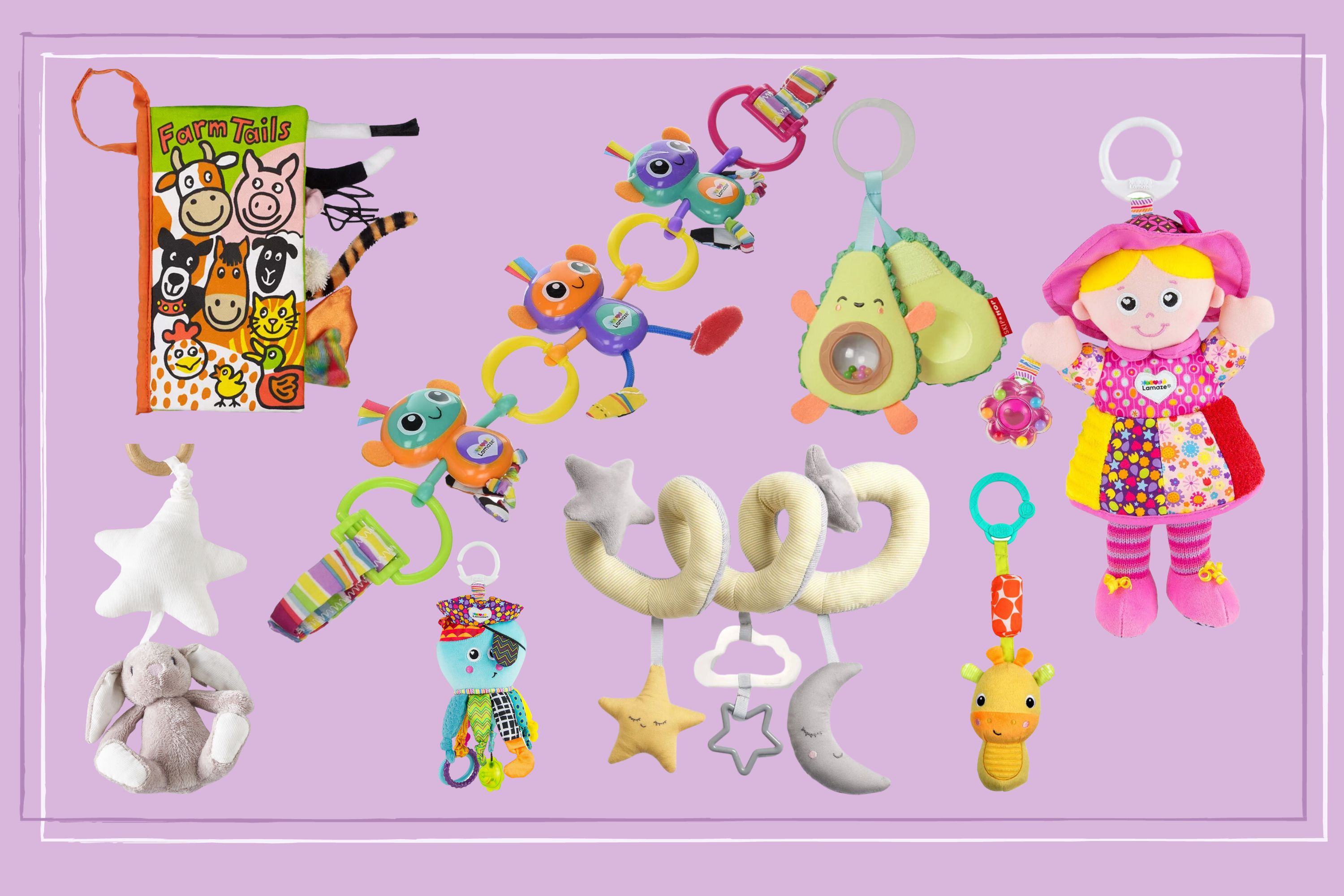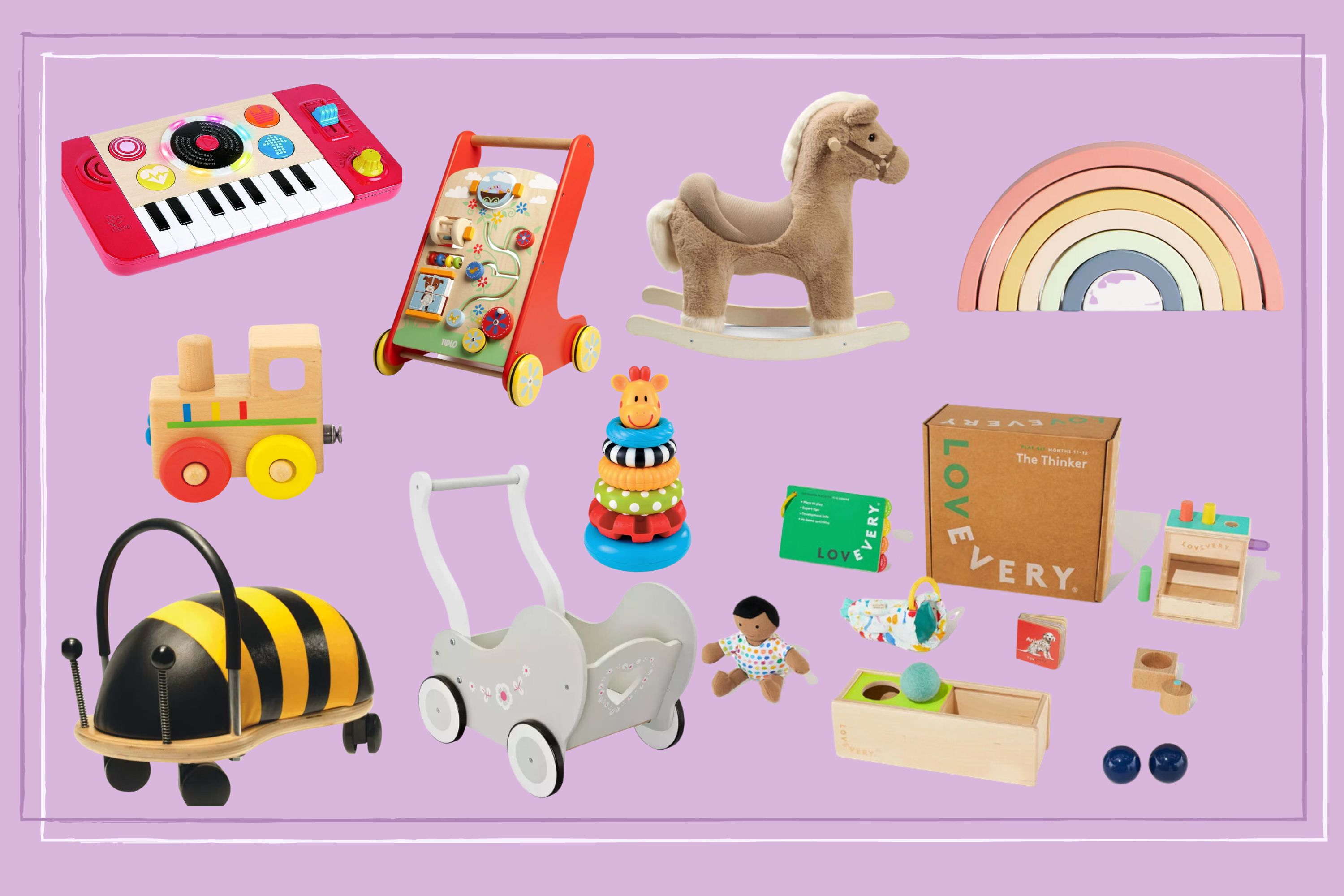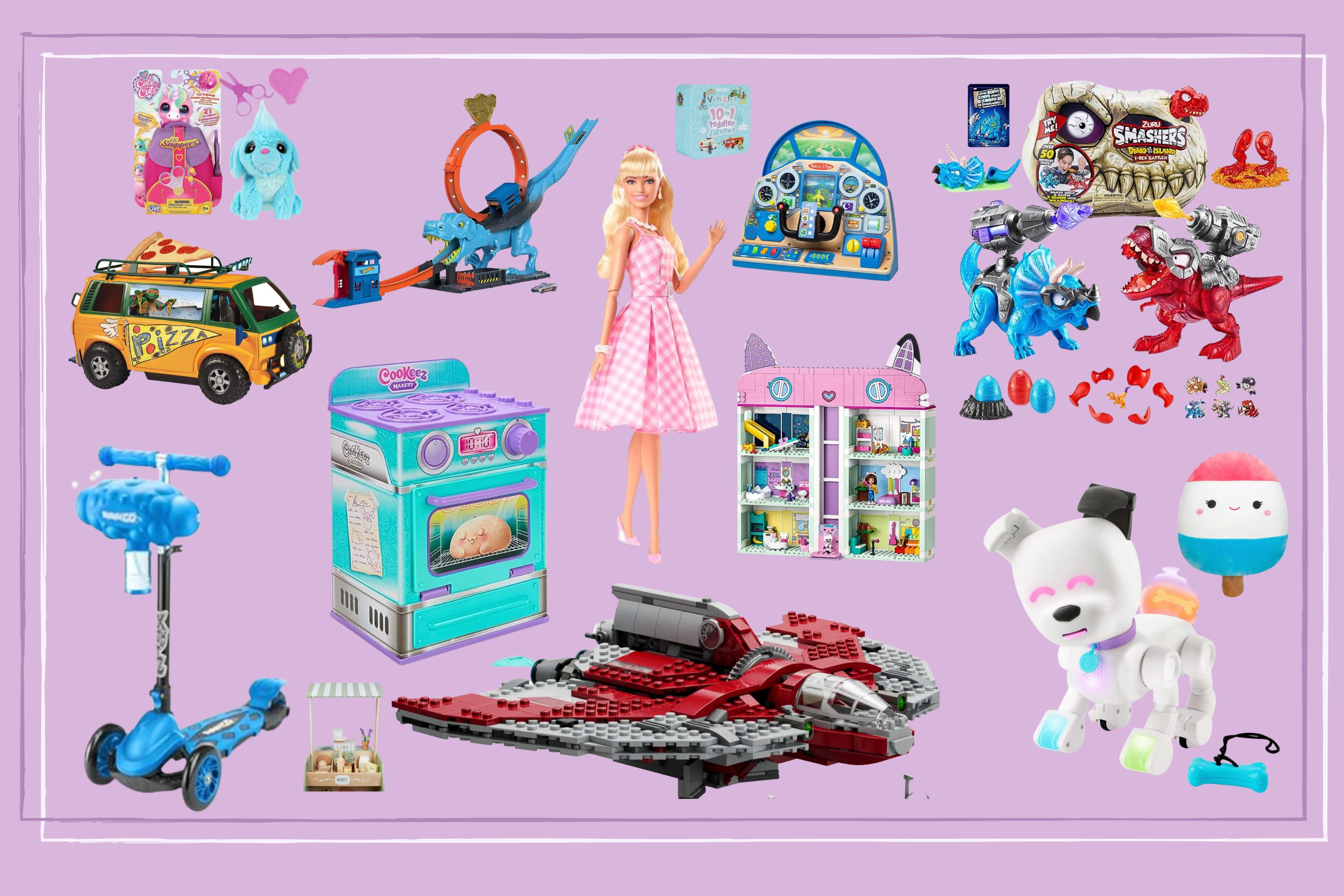15 best stacking and nesting toys for babies and toddlers - and why your little one loves them so much
As well as being a great form of play, the best stacking and nesting toys are key for your infant's development too
Dr Amanda Gummer

Not only are the best stacking and nesting toys fun for your little one to play with, they are also a critical part of your child's development. These types of toys are some of the best toys for six to 12 month olds, and not only help your child to develop their hand-eye coordination, but also foster spatial awareness and problem-solving and help to improve your little one's understanding of size and shape too. Gripping the blocks will also give fine motor skills a good workout, and in the case of textured blocks, can be a great form of sensory play too.
Child development specialist Dr Amanda Gummer explains: "Activities such as building blocks, rattle play, exploring toys with levers and push buttons can enhance skills of grasping and manipulating, especially when there are different sizes, textures and shapes to explore." She adds: "You can stimulate a baby’s curiosity with interesting things to see and hear whilst playing. Brightly coloured toys and images hanging from cots or on floor mats will all help encourage creativity and provide simple entertainment for little ones."
While your child might start playing with stacking toys from about six months old (although, remember that all children develop at different rates), these toys can easily keep kids entertained well into pre-school age.
We've picked the best stacking and nesting toys available to help you buy something suitable for your child. As we commit to sharing more sustainable products, we've also included lots of wooden stacking toys in the list too. We've also got great options if you want something more design focused, before your little one gets enamoured with more garish plastic toys.
15 best stacking and nesting toys for babies and toddlers

Suitable from: 10 months
An Etsy bestseller, this wooden stacker toy makes a great sustainable gift, especially if you want to avoid buying plastic - it can be personalised too. Suitable for babies from 10 months, there are four different options of animal topper to choose from, including an elephant, lion, bunny or teddy bear. As your little one learns to stack the rings in size and colour order, they'll develop they fine motor skills and build their problem-solving abilities at the same time. When not in use, this makes a cute decorative piece.
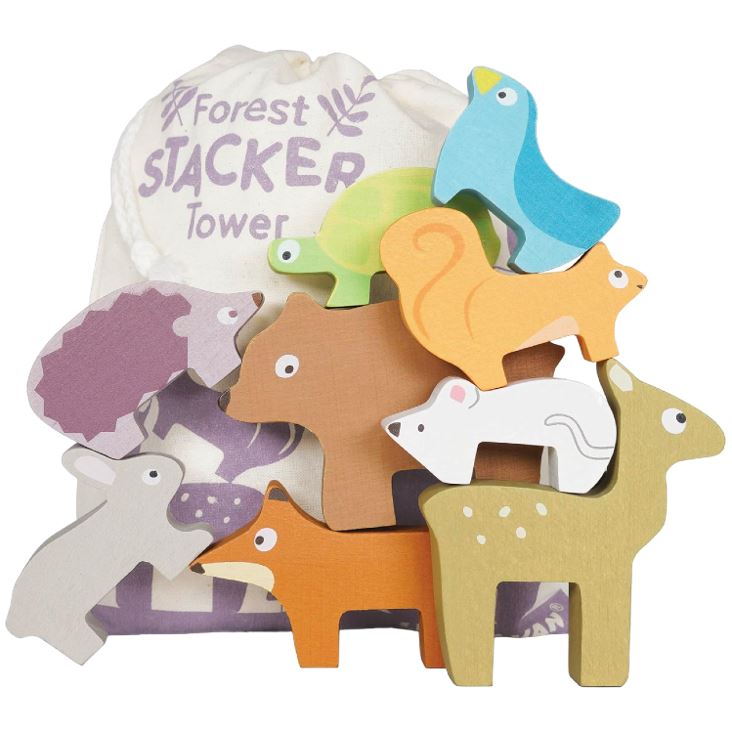
Suitable from: 18 months
For older infants, this wooden stacker toy requires little ones to balance the pieces when stacking rather than simply putting them on top of each other, building on their hand-eye coordination and dexterity. Each of the pieces is shaped like a recognisable animal, which can be helpful for building your child's emotional intelligence, as well as fostering their creativity. The set includes nine different animals that can be easily wiped clean, plus a handy drawstring bag for easy storage.
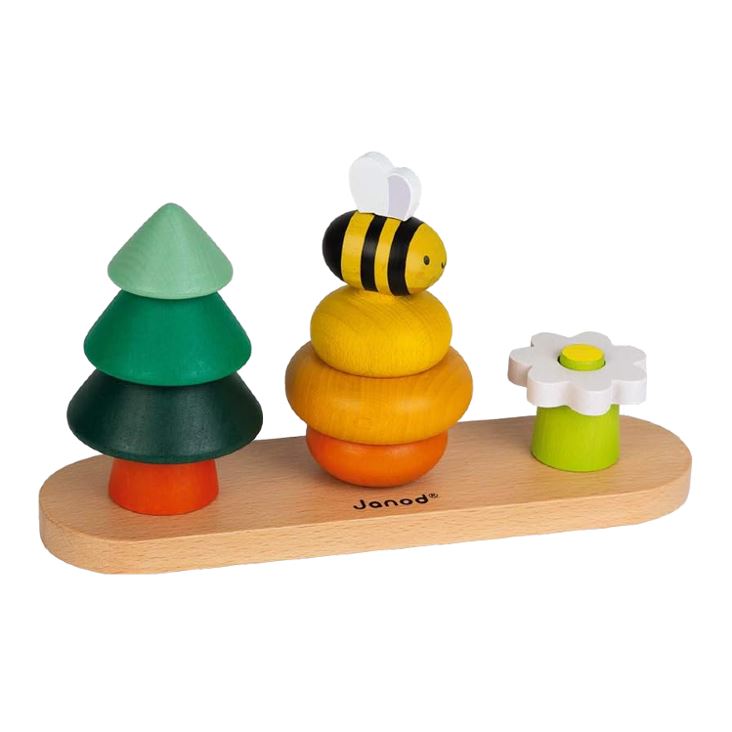
Suitable from: 12 months
This woodland-themed stacking toy is great for improving fine motor skills and hand-eye coordination as it's essentially three different stackers in one, ranging from a two-piece flower stacker up to a four-piece tree one. The cute bee will pique a child's imagination and curiosity, while they try out their problem-solving skills to stack the pieces to create the shapes. This toy is made from wood and would make a really thoughtful birthday or Christmas gift for any little one with design (and sustainability) conscious parents.
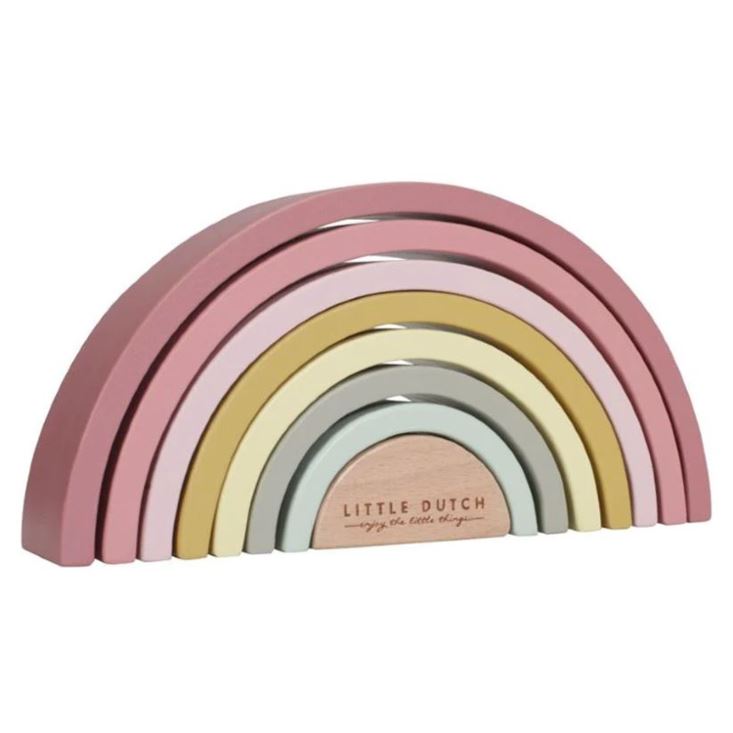
Suitable from: 12 months
This wooden rainbow stacker toy is so beautiful, it could genuinely pass as a decorative ornament when not in use. Available in four different colourways, each option features beautiful pastel shades that both little ones and parents will love. As your baby plays, they will not only work on their fine motor skills, they will also start to understand sequencing, how objects relate to each other, and get their creative juices flowing as they try to make new shapes with the arches.

Suitable from: three months
Whether your little one wants to nest or stack, with these stars the world is their oyster. Their fine motor skills will get a boost as they try to grab and grip the stars, while their spatial awareness and problem-solving will develop as they attempt to stack them on top of each other or nest them inside. The stars are free from any harmful materials and it's easy to keep them clean and hygienic to keep your little one safe - simply pop them in the dishwasher.
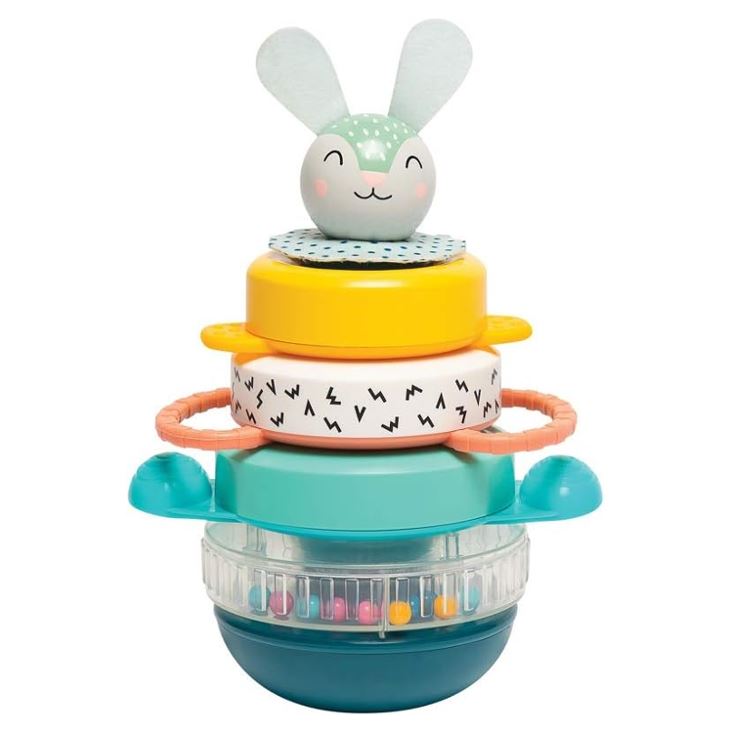
Suitable from: 9 months
With it's bold patterns and block colours, this rabbit stacker will definitely delight your little one. Each ring is easy to grab, plus the base contains swirling beads as a fun sensory surprise during play. The bunny character will develop your infant's emotional intelligence, while their motor skills and cognitive development will also see a boost. Not only will your baby learn sorting and problem solving skills, they'll also learn to differentiate between colours and sizes too.
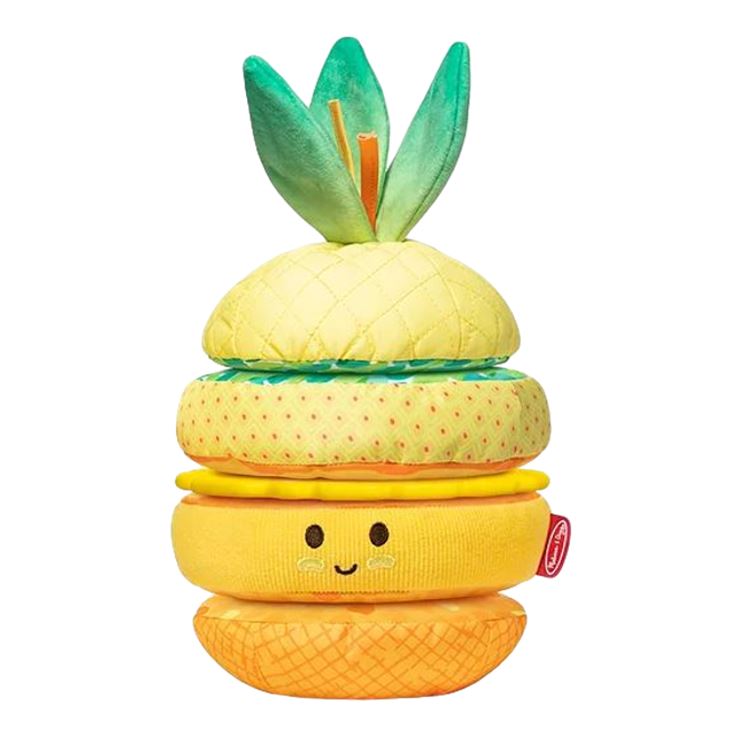
Suitable from: birth
This cute stacker offers a mix of textures to stimulate your baby's senses. There are two soft rings (one of which makes a wonderful crinkle sound), a textured plastic ring as well as the soft pineapple topper that has crinkly leaves and smooth ribbons. The base also rattles and rocks helping your little one understand cause and effect. They'll also develop important problem solving skills as they learn to fit the pineapple together and work on their fine motor skills as they grab, scrunch and squeeze.

Suitable from: 12 months
Another brilliant wooden stacker toy, this one has five colourful wooden rings, with a dinosaur topper to finish it off. For an extra sensory touch, some of the rings have wooden hands and feet to play with too. The colours and patterns will stimulate your little one's senses, while the dino topper will spark their imagination. As with other stackers, their fine motor skills and cognitive development will get a boost too. When it comes to cleaning, a quick wipe will have this one good as new.

Suitable from: six months
With five colourful cubes to stack, little ones can work on their sequencing and fine motor skills. Their cognitive processing and hand-eye coordination will develop as they learn how to successfully stack the cubes. As they grow, they can work on identifying the colours, numbers, animals and objects that adorn each block. As well as stacking, these toys can be nested inside each other (which makes for easy storage), or placed side by side to create a colourful scene to spark their imagination.
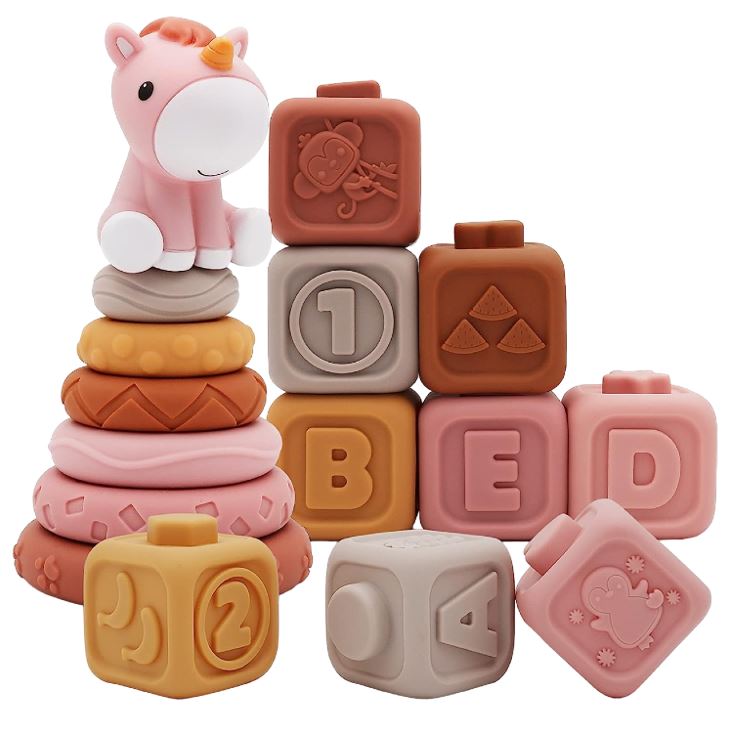
Suitable from: six months
This toy includes two different forms of stacking, from the round stacker with five different rings (that are easy for teething and exploring babies to chew), plus a cute horse figure to pop on top, to the six squidge-able stacking blocks that are embossed with animals, fruits, numbers and geometric patterns. The textured blocks and rings will stimulate your little one's senses, while the stacking process will build your child's fine motor skills, hand-eye coordination and spatial awareness.
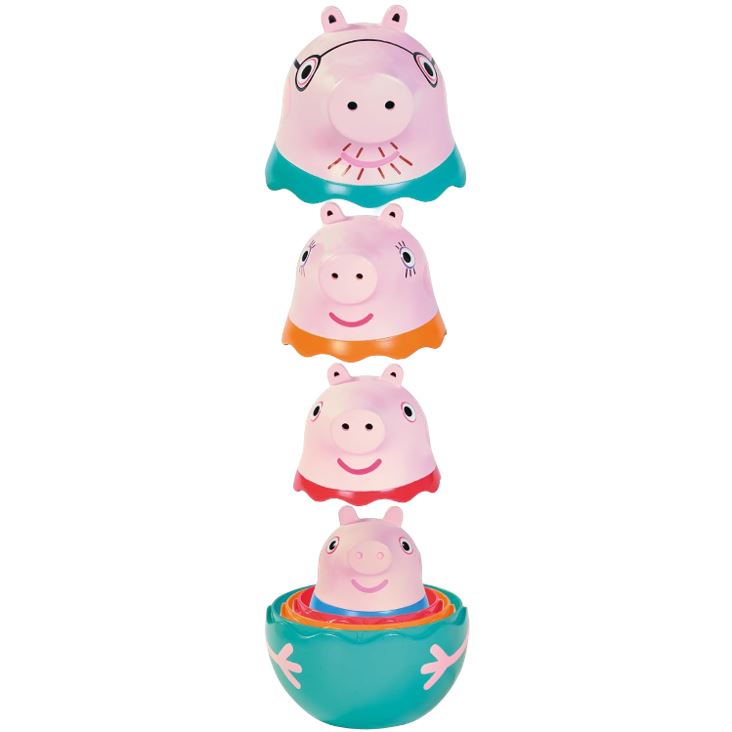
Suitable from: 18 months
Mini Peppa Pig fans will love this nesting toy that features all of their favourite characters from Peppa's family, including Mummy Pig, Daddy Pig, George and Peppa herself. The George figure at the centre rattles and rolls around for a lovely bit of sensory play. Both halves of the Daddy Pig, Mummy Pig and Peppa figures can also be used in water or sand play (remember to rinse them afterwards). When not in use, all the figures fit together for neat and compact storage.
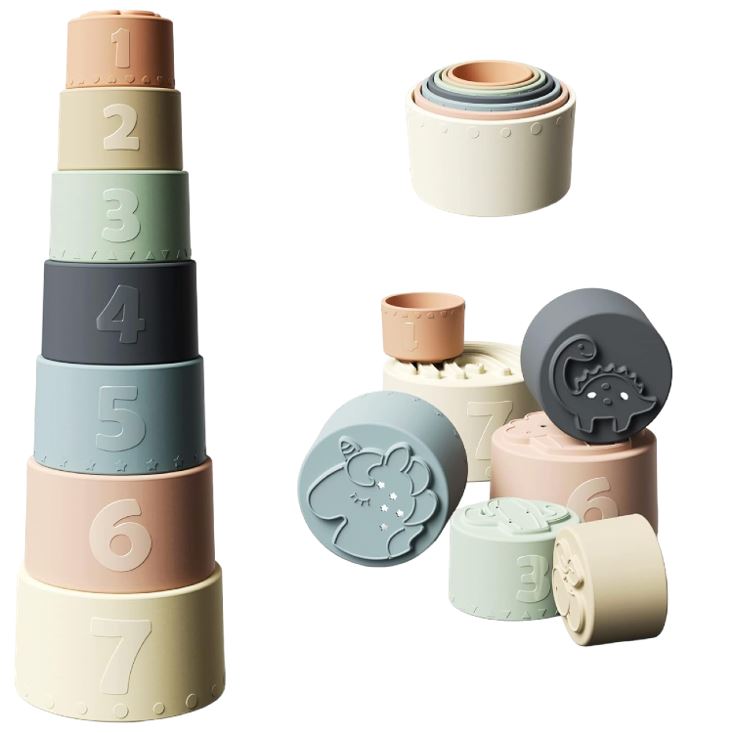
Suitable from: six months
Stackable and nestable, these stacking cups come in two soft colour palettes that are worlds away from more garish counterparts. Made from food-safe silicone, the cups are soft and chewable so you can let your child explore them with their mouths (as babies love to do), and they are easy to clean so you can ensure they remain hygienic. The cups are textured, which curious little fingers will love, and feature numbers to help them learn counting and sequencing too.
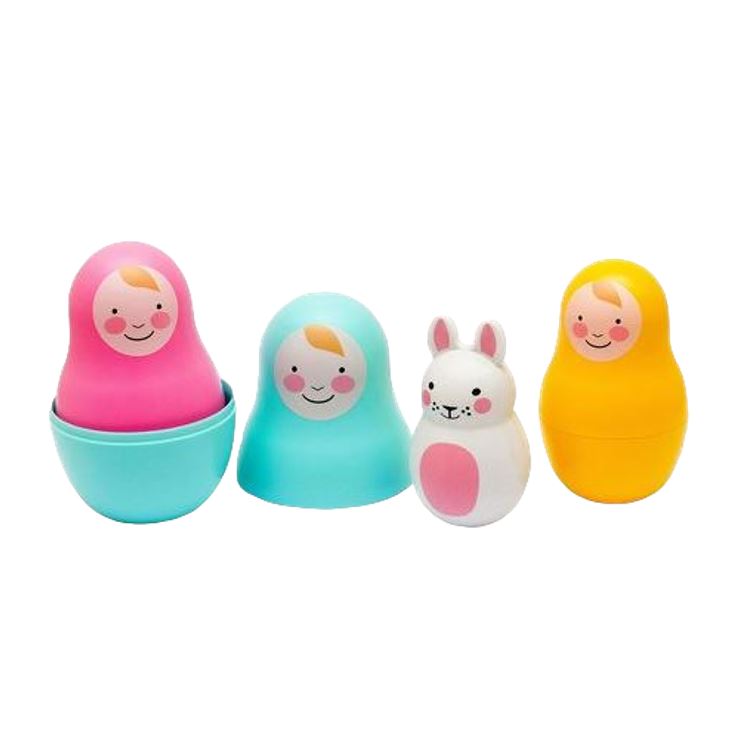
Suitable from: 12 months
This colourful nesting toy makes a great gift. The toy includes four characters, including a rabbit at the centre which little ones will love. It promotes hand-eye coordination and is brightly coloured so it'll keep your little one engaged, as they discover and interact with each character. As they slot the figures together in the right order, they'll develop their fine motor skills too. When not being played with, it makes a cute ornament. It can be easily wiped clean too.

Suitable from: birth
If you're looking for a variation on the traditional stacker, then this plush version will be right up your street. This forest animal stacker includes four different plush animals in different sizes, to encourage motor skills and hand-eye coordination, while also providing an opportunity to learn numbers, colours and the names of the animals. The cute faces on each plush toy can also help your child to develop their emotional intelligence and foster their creativity by encouraging imaginative play.

Suitable from: 12 months
A great alternative to plastic stacker toys, this solid wood stacker toy makes a thoughtful gift - especially for little animal lovers. The cute koala character is really engaging, and as little ones learn to stack the rings in the right order, they'll improve their hand-eye coordination, especially as the base wobbles. The different shapes, weights and colours of the pieces also help with cognitive development.
Why are stacking toys so good for babies and toddlers and why do they love them so much?
There are multiple complex reasons why children love stacking and nesting toys so much, from the skills they promote to the sensory experience they provide, as well as how the bright colours or characters that make up the design are so engaging for children from a young age.
According to a study, until they are two years old, children explore objects in increasingly complex ways. While initially infants might explore a single object, as they grow, they start to explore objects in relation to other objects - which is key to their cognitive development.
Stacking and nesting toys are also brilliant for developing a child's fine motor skills as they practice grabbing and using pincer movements to pick up the pieces, and their hand-eye coordination as they try to stack or nest the pieces together. This can also help your child understand sequencing and the size or colour of objects in relation to each other. Child development specialist Dr Amanda Gummer agrees, saying: "Stacking cups or blocks allow babies to practice grasping, stacking, and knocking down which promote hand-eye coordination and spatial awareness."
Parenting advice, hot topics, best buys and family finance tips delivered straight to your inbox.
Another study from the University of Kent found that toys like this can help to bring on a child's linguistic skills, as the shapes and patterns are easy for a parent to articulate to a child. The research says: 'A child must be able to understand easily and clearly what a parent is referring to for vocabulary acquisition to proceed smoothly... This will be especially the case when a toy has multiple parts and if the intended purpose of the toy is to do something with the parts in a specific sequence, such as stacking ring or nesting block toys. For example, if there are four blocks or rings that are part of a toy, being able to refer to each block or ring in a clear manner will be helpful to both the parent and the child.'
Stacking and nesting toys can also be a key part of an infant and toddler's sensory exploration thanks to the colours, textures and sounds they embody. Dr Amanda Gummer adds: "Babies at this age love exploring different textures to stimulate their sense of touch and encourage sensory exploration... vibrant colours and high-contrast patterns capture attention and aid in visual development."
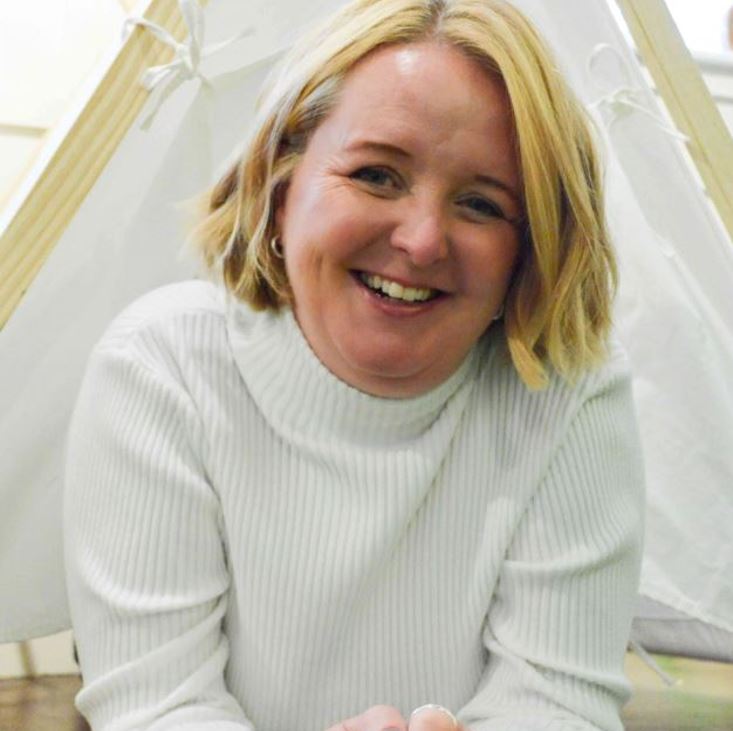
Dr Amanda Gummer is a child development expert and has a PhD in Neuropsychology, the Postgraduate Certificate in Higher Education and more than 20 years’ experience working with children and families. In 2012, she founded The Good Play Guide, an independent, expert accreditation service for children’s products, including toys, apps and more.
Continue reading
Sarah is GoodtoKnow’s Money Editor. After Sarah graduated from University of Wales, Aberystwyth, with a degree in English and Creative Writing, she entered the world of publishing in 2007, working as a writer and digital editor on a range of titles including Real Homes, Homebuilding & Renovating, The Money Edit and more. When not writing or editing, Sarah can be found hanging out with her rockstar dog, getting opinionated about a movie or learning British Sign Language.
- Dr Amanda GummerChild development expert
